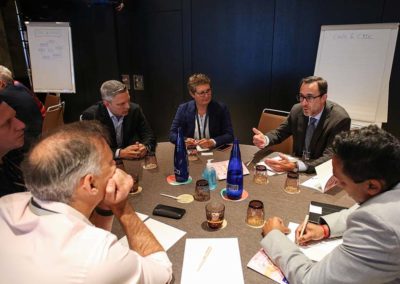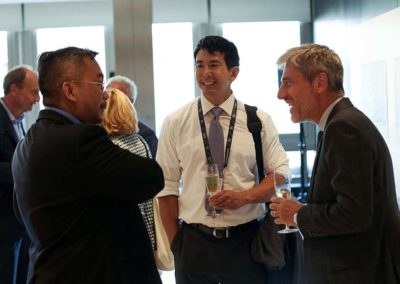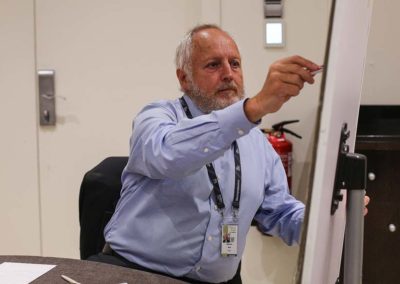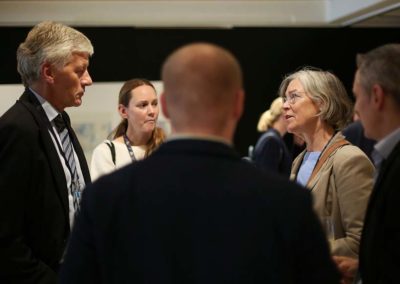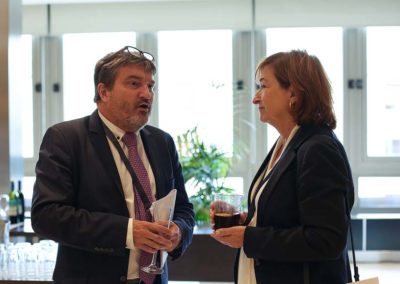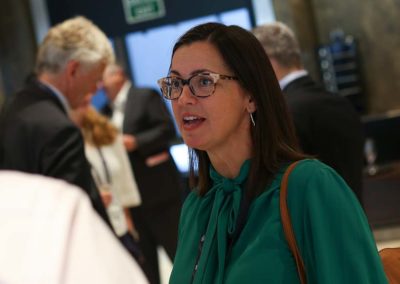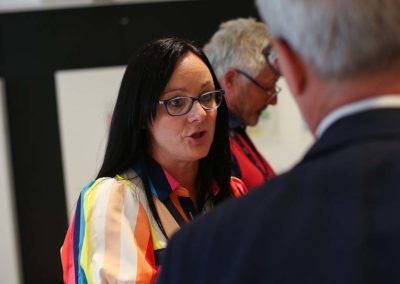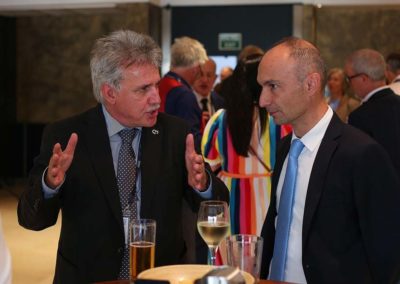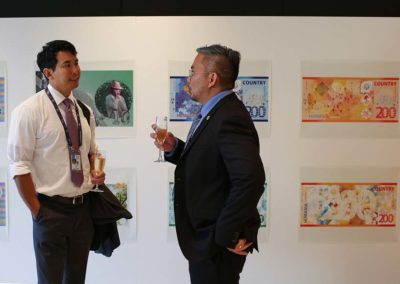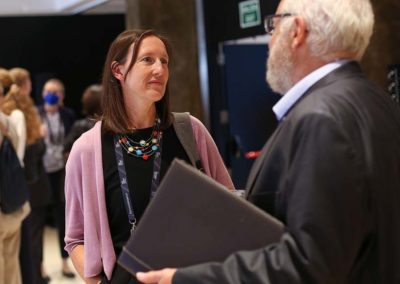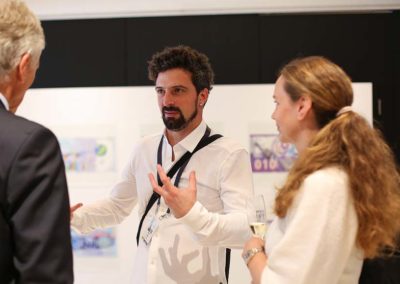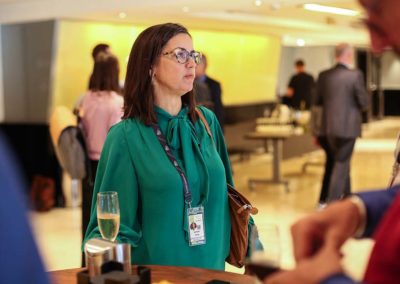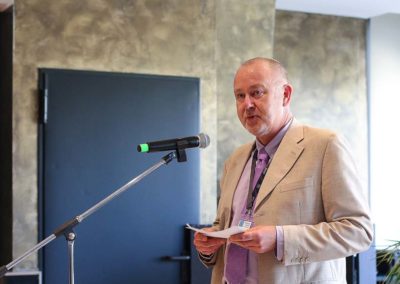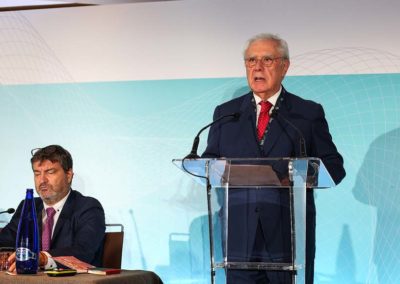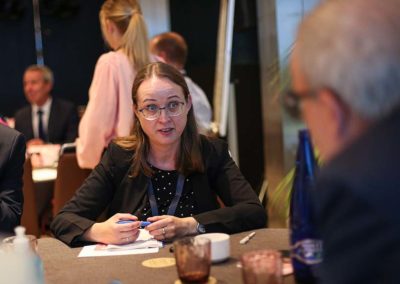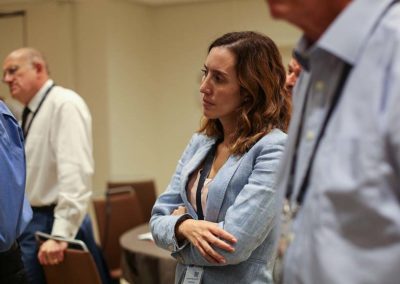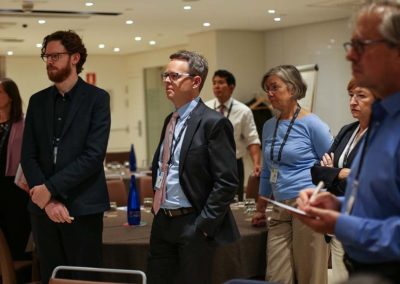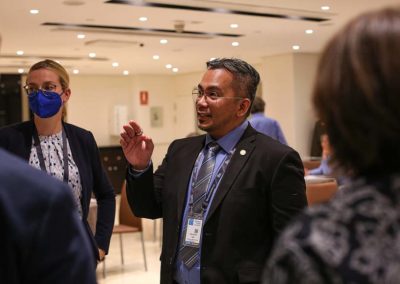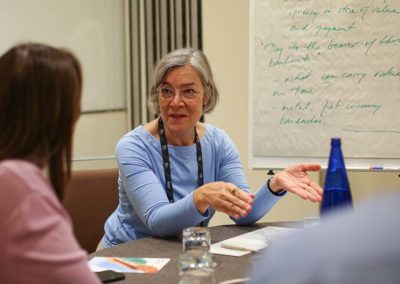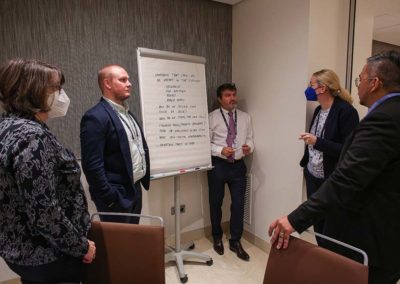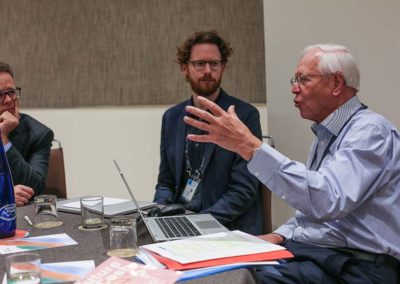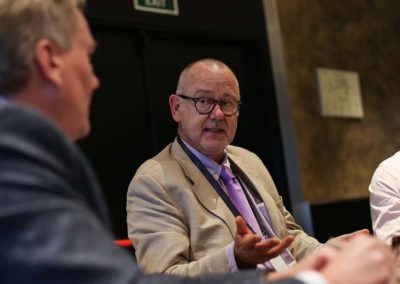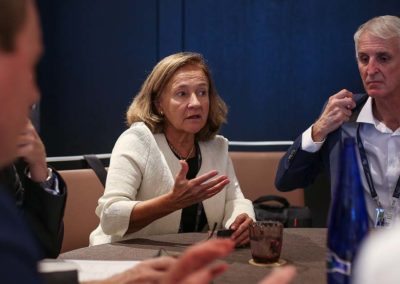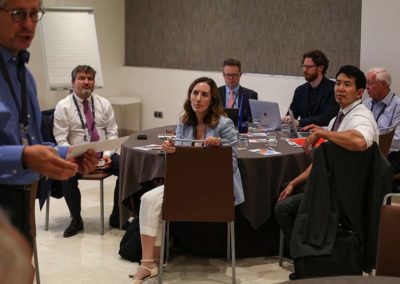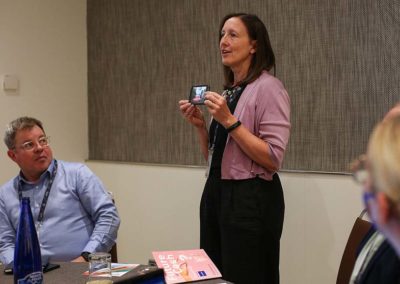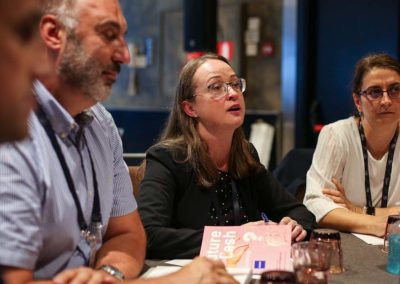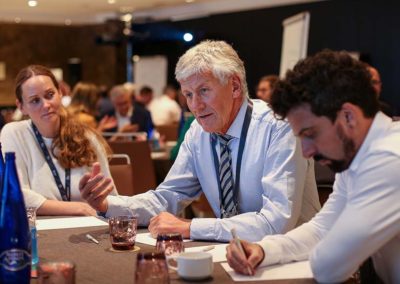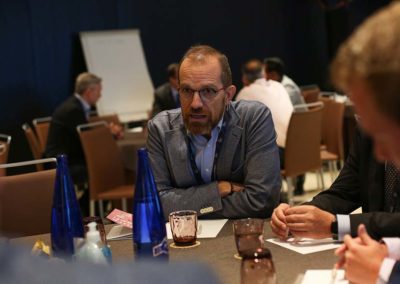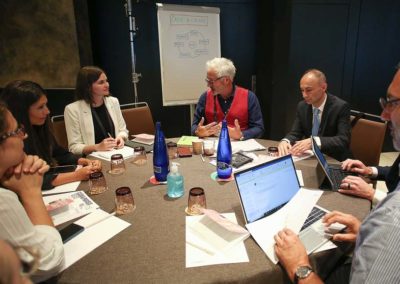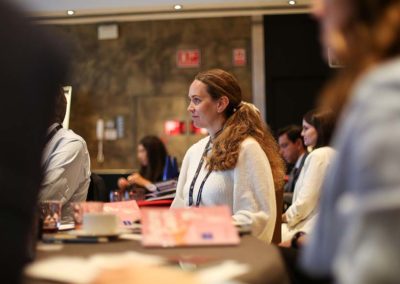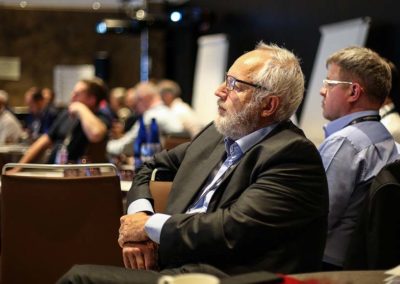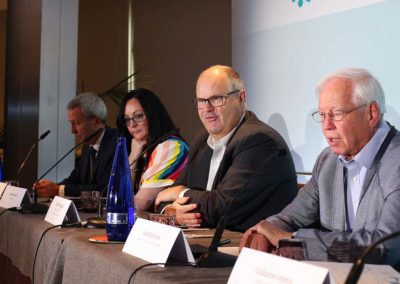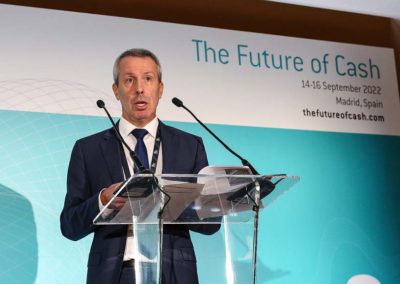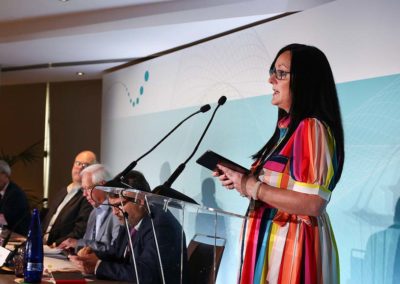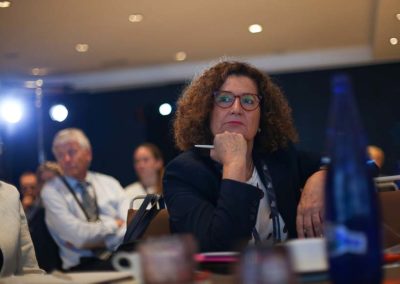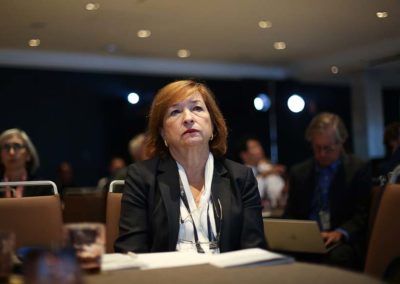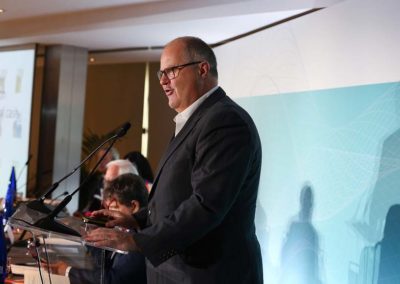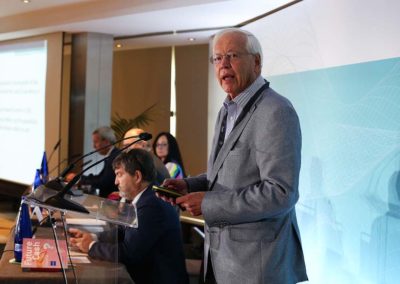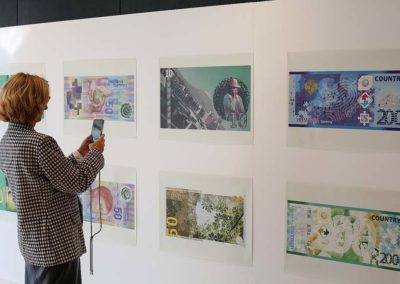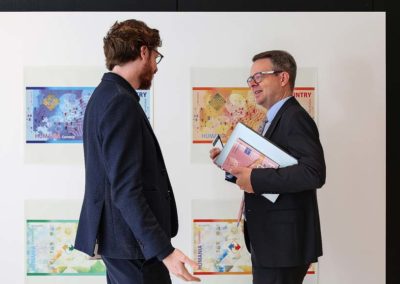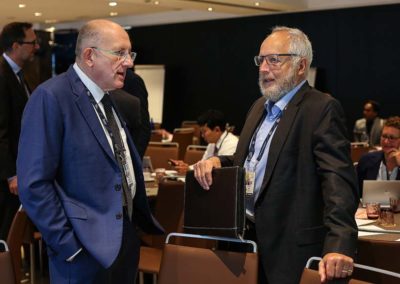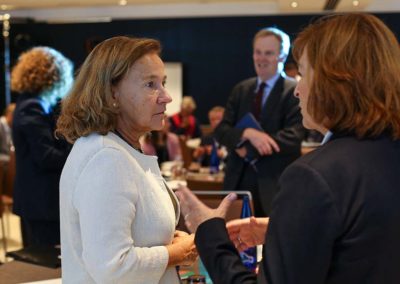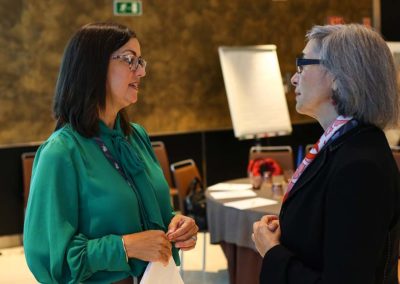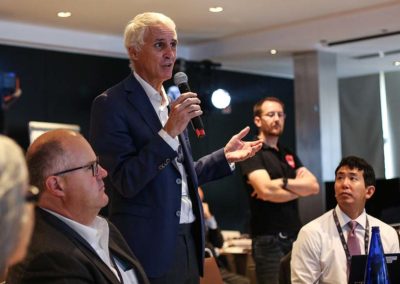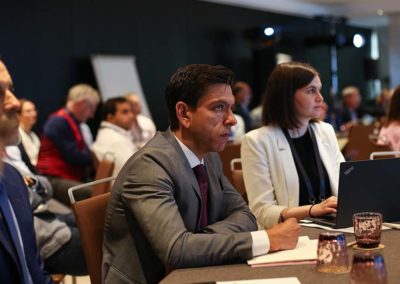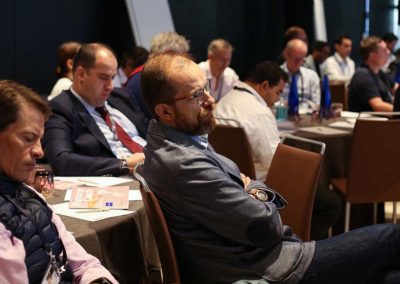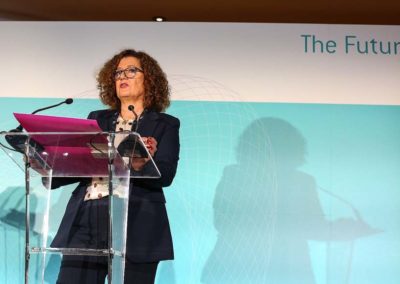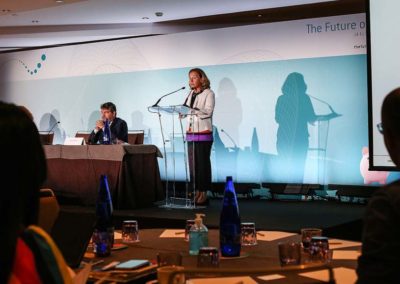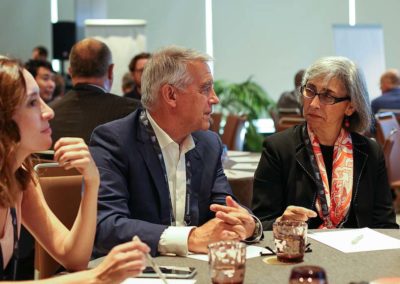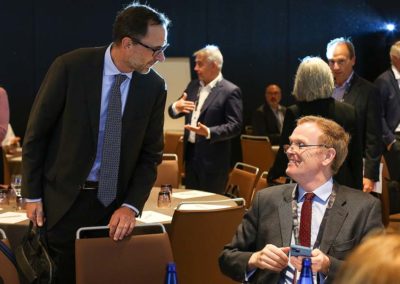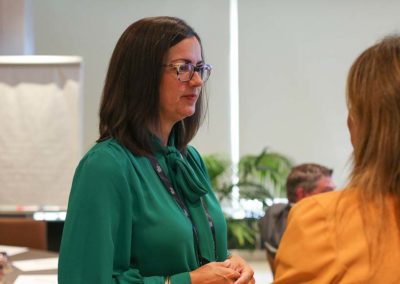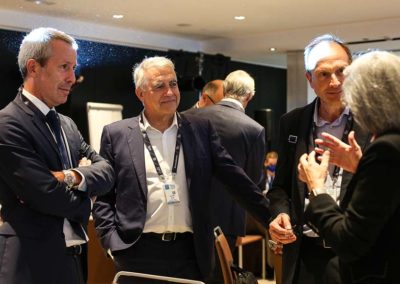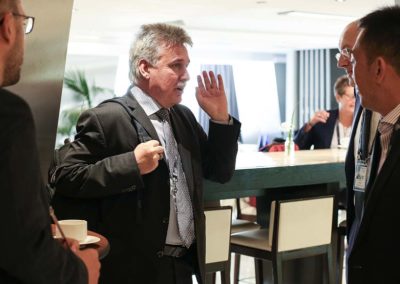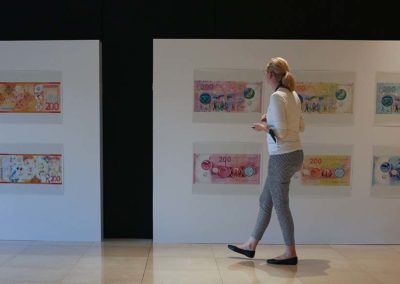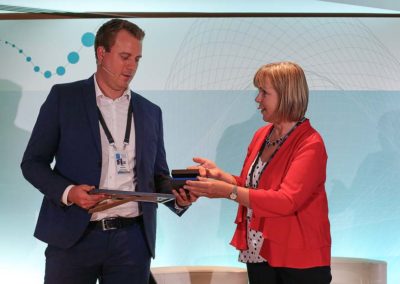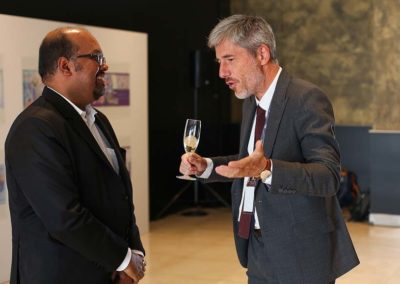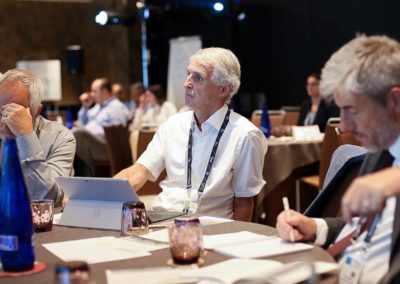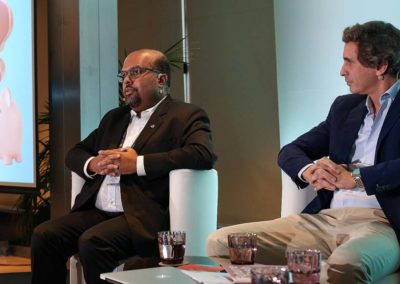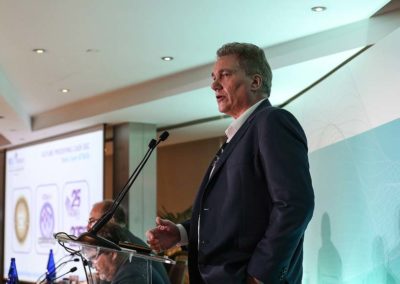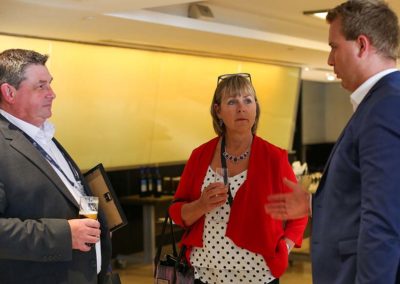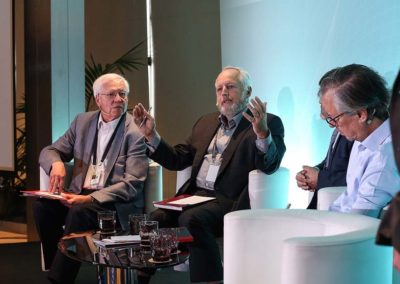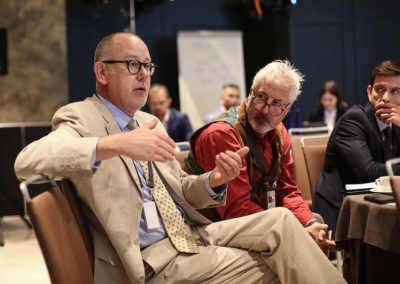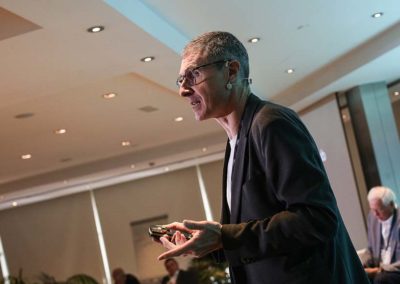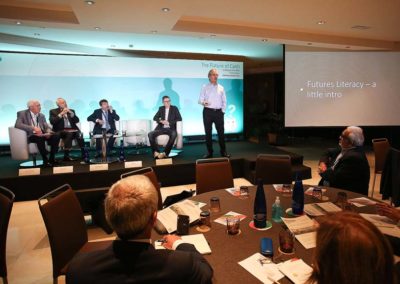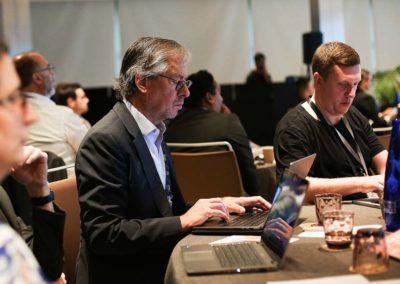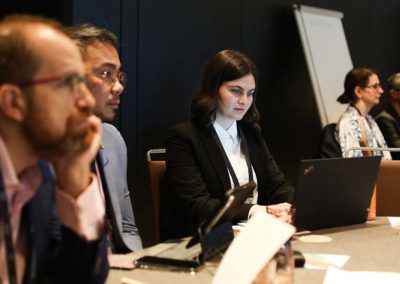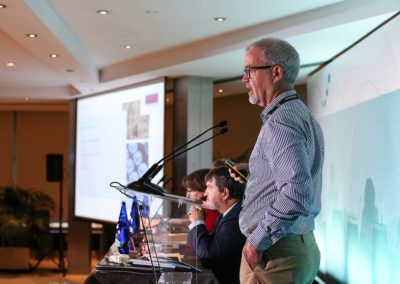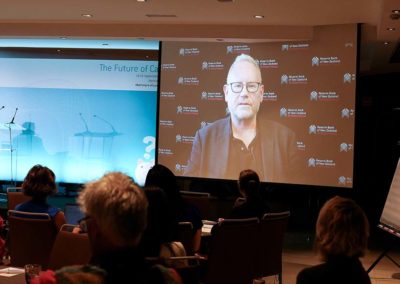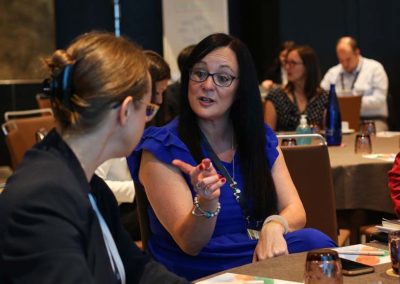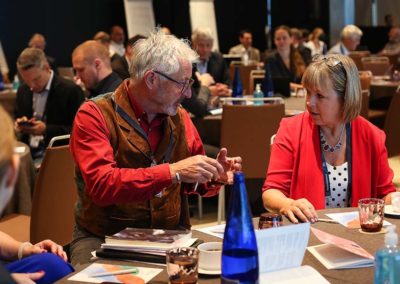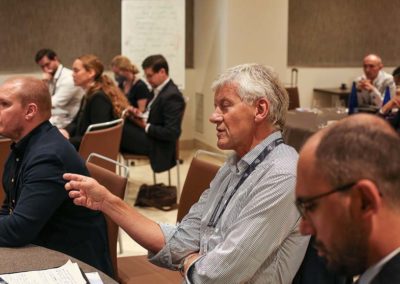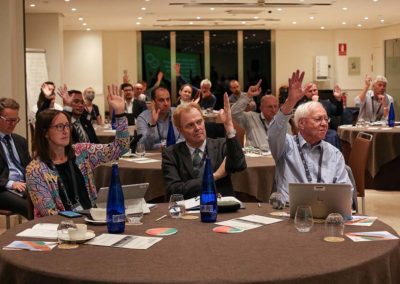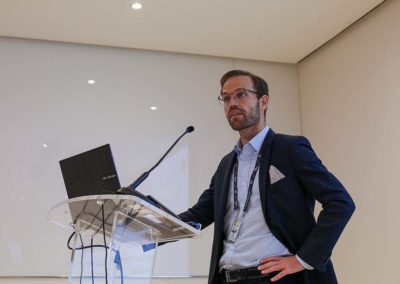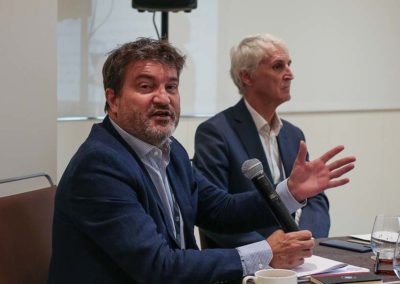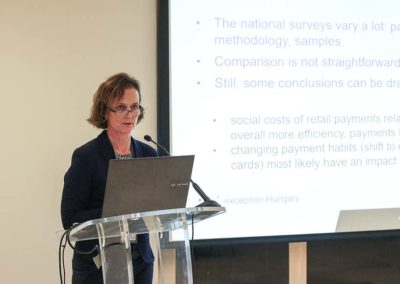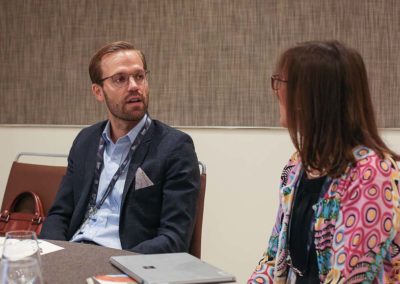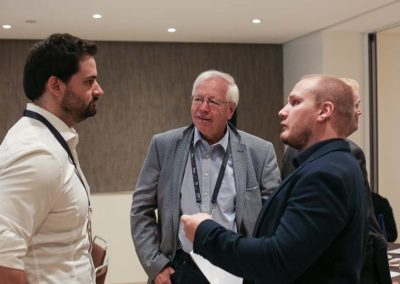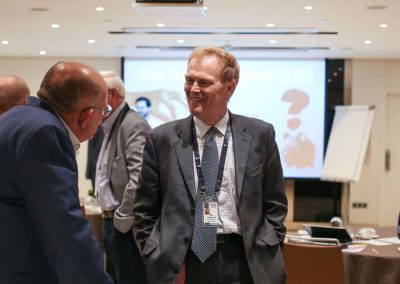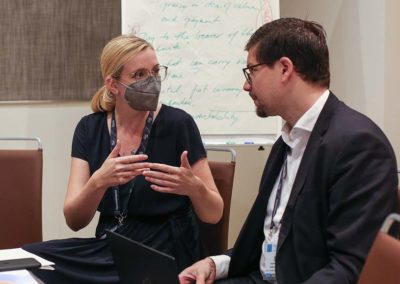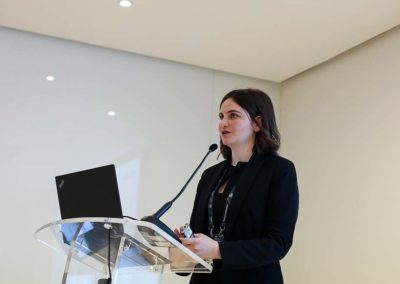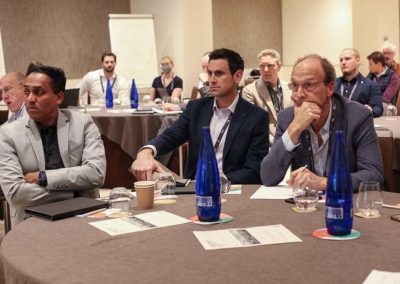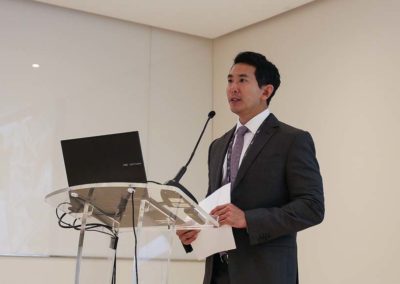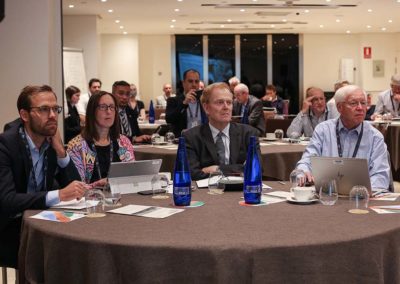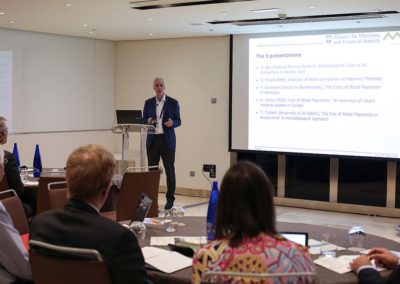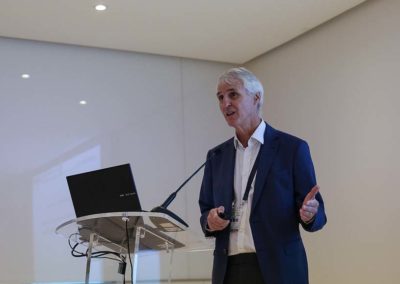Review of 2022
Cash – a Means of Payment and So Much More!
Central banks, commercial sector cash industry professionals and delegates from the world of academia gathered in Madrid the 2022 edition of the Future of Cash, a much-anticipated event originally scheduled for April 2020.
Led by Guillaume Lepecq, Chair of CashEssentials, the two-day event was book-ended by two other important initiatives. First, a three-part Futures Literacy Lab, which, in association with the UNESCO Chair for the Future of Finance, aimed at imagining the role of cash in the Future Monetary Landscape. Second, and to conclude. a half-day research seminar seeking to better Understand the Cost of Payments.
Access to the presentations is limited to FOC 2022 attendees, please use the password which was provided by the events@recon-intl.com
Setting the Scene
Day One of the conference welcomed three senior central bank representatives – Helena Tejero from the Banco de España, Paloma Varela from the European Central Bank and Kathleen Young from the US Federal Reserve. All three are relatively new to their current senior posts (Kathleen was appointed to the role of Chief of FedCash Services for Federal Reserve Financial Services just a few days earlier!), but all brought a wealth of industry experience and information from their respective organisations, providing delegates with rich insights on the continually evolving cash environment.
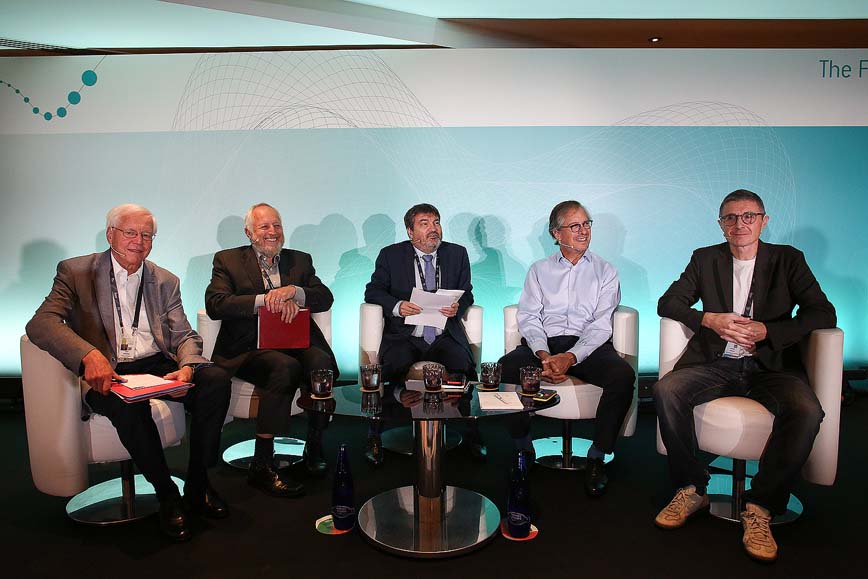
Each central bank speaker remarked on the significant growth of currency in circulation since the start of the COVID-19 pandemic, but also highlighted in Europe a further spike in demand at the onset of the Russian invasion of Ukraine, reinforcing how in times of adversity and uncertainty, people still turn to cash.
More recent returns of excess cash to central bank branches were also noted as inflation and interest rate rises start to bite, a trend together with an increased focus on the cost of holding cash stocks to watch in the coming months.
The trends relating to the two major US dollar and euro currencies were not alone, as Antti Heinonen, member of the CashEssentials Steering Committee and former Director, Banknotes at the ECB showed through the data he regularly compiles from more than 100 central banks and issuing authorities. Growth in banknote demand throughout the height of the COVID-19 pandemic averaged more than twice the long-term trend rate and that, while trends in 2021 reverted to closer to the norm in most countries, currency issue remains robust.
The disparity between increased currency issued and declines in actual transactional currency use was a repeated theme of the conference, as was the increasing focus being taken by central banks to better understand the dynamics of the commercial cash infrastructures in their countries.
Banco de España and the Federal Reserve both shared their research on changes to cash access as commercial bank branches and ATMs continued to close. Alex Bau, VP Data and Policy Analysis at the Federal Reserve drilled down on this data in the CashEssentials’ research seminar, describing the analysis and simulation work done to estimate the consumer impact and cost of further reductions in cash access.
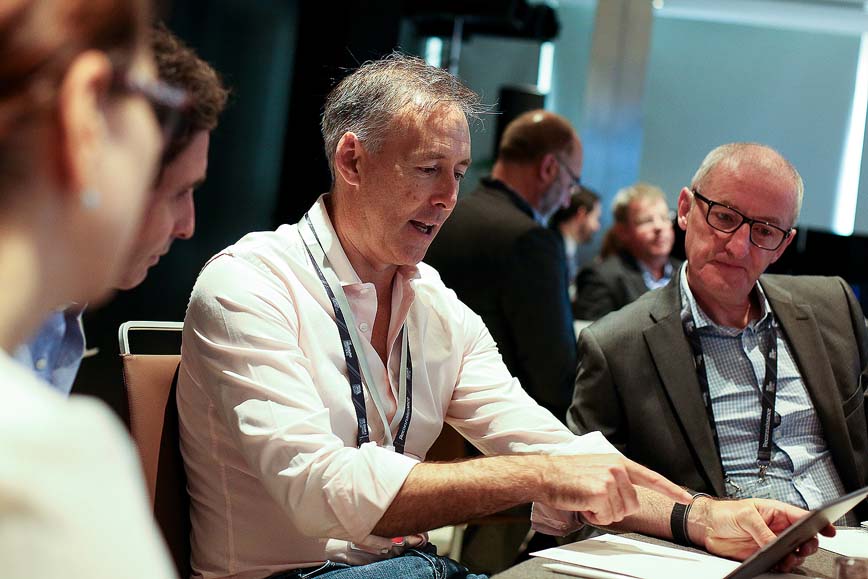
More Cash but less Cash Payments
Further central bank insights on Day Two reinforced many of the key themes already surfaced, with specific focus on cash trends in Germany being presented by Heike Wörlen from the Deutsche Bundesbank, Gianluca Maddaloni from Banca d’Italia sharing his cash supply chain management analysis in operatic fashion and Ian Woolford from Te Pūtea Matua, the Reserve Bank of New Zealand (RBNZ), providing an update on the work being undertaken as part of the Bank’s Future of Money – Te Moni Anamata – programme.
Heike shared findings from the Bundesbank’s sixth 2021 study on payment behaviour in Germany, reporting declines in cash, the payment method accounting for 58% of respondents’ purchases of goods and services, compared to 74% back in 2017. Online shopping and growth in debit card (primarily domestic Girocard) use are all playing their part to erode Germany’s historic preference for cash use. Ian noted findings from the RBNZ research which included widespread public support for cash even if the individuals weren’t particularly heavy users of cash in their own right.
Other central bank presentations came from Wim Goyens, who provided insights into the construction of the National Bank of Belgium’s new cash centre consolidating their cash operations in a purpose-built facility on the outskirts of Brussels. Carlos Gonzalez at Banca de España shared its work on addressing the environmental sustainability of cash in Spain.
Making the Case for Cash
Building on the growing focus on the environmental impact of cash use, Leeann Shanks – Sustainability Lead Cash & Self Service Operations at NatWest Group – described the work at her bank (both an issuer of banknotes in Scotland and a major participant in the British wholesale and retail cash supply chain) and the broader United Kingdom Cash Industry Environmental Charter Group which is working towards a greener cash cycle. Key takeaways were the need for better data points to measure tangible targets and how practical steps such as the reduction of plastic banknote packaging are having not just real environmental but also significant cost-saving benefits.
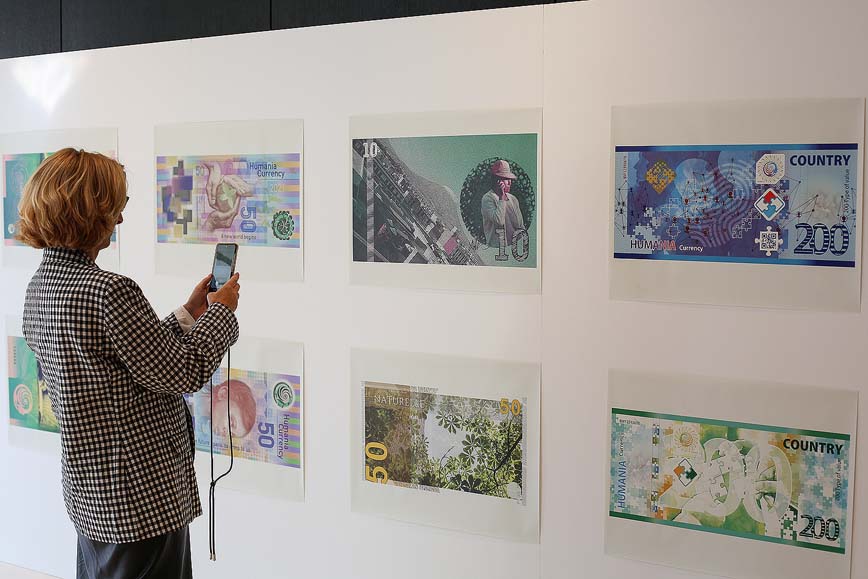
In his presentation, Diederik Bruggink of the European Savings and Retail Banking Group reported on findings from the European Retail Payments Board Report on Access to and Acceptance of Cash, while Graham Mott from the LINK ATM Scheme provided insights into changing ATM demand in the United Kingdom in a presentation entitled ‘Emerging from the Pandemic, but into the Cost of Living Crises’.
Issues discussed here – including access to cash, acceptance of cash and cash and crises – were three of six themes debated later in a series of ‘speed dating’ style round table discussions.
Three other speakers, Javier Rupérez from Spanish cash campaign Platform Denaria, Brett Scott Author of Cloudmoney and Zennan Green at Glory Global Solutions all made forceful presentations in defence of cash.
Denaria, which was set up last year and is funded by the Spanish CIT sector, has already been successful in the campaign to give Spaniards the right to pay in cash, which was enshrined into law this summer. In demonstrating the success of advocacy at a local level, it perhaps provides a blueprint for advocacy groups in other countries and their efforts to maintain cash as a public good.
Brett Scott , who as well as an author is described as a monetary anthropologist , gave a fascinating view on what drives consumer payment behaviour, and how BigTech exploits this. Humans, he said, are essentially mimetic – i.e. they subconsciously follow one another – and payment companies, by driving out choice, are nudging the public into following the path to cashless.
On a more practical note, Zennan Green demonstrated that solutions are there to facilitate access to and availability of cash given the rapid closure in many countries of bank branches and ATMs. Glory – traditionally a supplier of automation technology for those bank branches – provides many of the new generations of solution, having recently embarked on a round of investment into companies that are harnessing digital technology to ensure physical access.
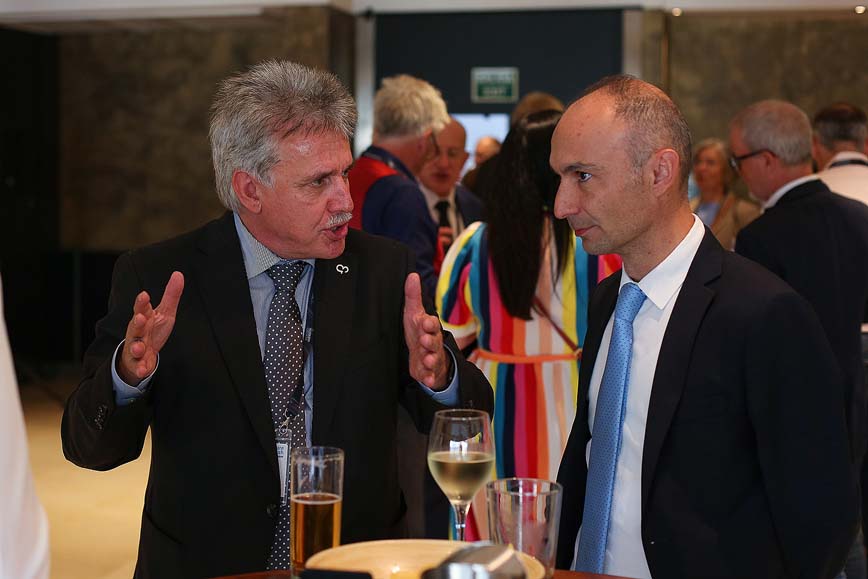
Cash, Innovation and CashTech
Marcel Ficken from ATMIA provided an update on the progress of the association’s Next Gen ATM project that aims to future proof the most important cash access channel.
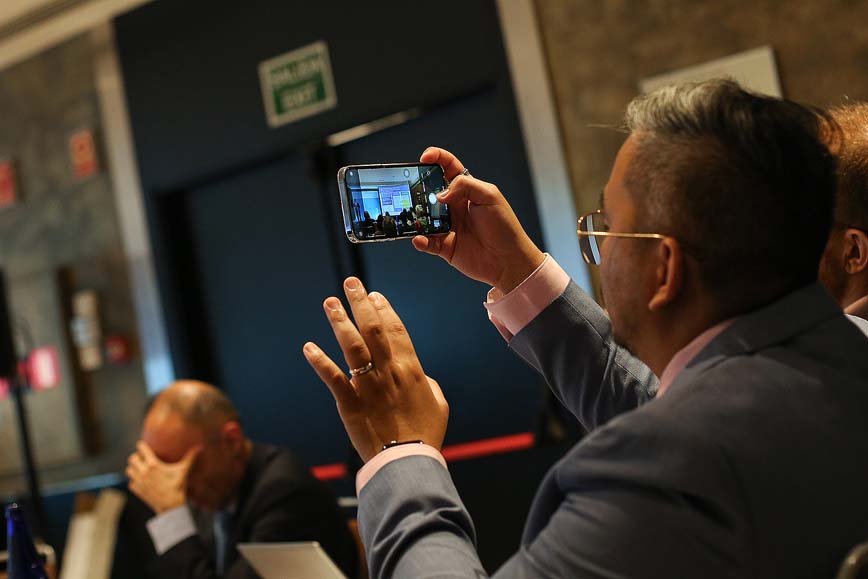
Barry Röhrs offered a fascinating round up of innovations across the cash cycle in Africa, highlighting how a number of non-traditional players are enabling cash and payments access to the previously unbanked, harnessing new technologies at breathtaking speed.
Ahead of the inaugural CashTech Innovation Awards three CashTech entrepreneurs Sandipan Chakraborty of Sonect, Sergio Kvaternik of viafintech and Julian Schubert from Koenig & Bauer debated the topic ‘Can CashTech Solve the Cash Conundrum?’ While the CashTech industry is still nascent, the innovations to provide alternative cash access, acceptance and, in the case of Koenig & Bauer’s ValiCash™, an easy way of authenticating banknotes via a smartphone app, all offer important contributions to support the future of cash.
Role of Cash in the Future Monetary landscape
As mentioned, ahead of the Madrid gathering a number of participants took part in a Futures Literacy Lab to imagine the role of cash in the future monetary landscape. To the wider conference delegates, Lab moderators Martin Calnan, UNESCO Chair for Futures Literacy and Riel Miller, Senior Fellow at Ecole des Ponts Business School provided insights into the Lab learnings, together with Antti Heinonen, Guillaume Lepecq and Richard Wall (Chairman of the International Association of Currency Affairs) – who were three of several group facilitators.
What was evident from the Lab feedback and conference as a whole is that though cash is one of a growing range of competing payment methods IT IS SO MUCH MORE! Yes, while cash is a unit of account, store of wealth and demonstrably turned to for contingency purposes, cash has so many other intrinsic and intangible characteristics, many deeply rooted in culture and tradition.
These unique properties and attributes can’t be taken for granted and, left to market forces and aggressive payments industry competition. Cash access, acceptance and use may all diminish, being payments system agnostic is not good enough!
Two comments emerged from the Lab sessions – ‘if we start thinking about the future of cash, we’ll spend less time discussing its short-term demise’ and ‘Money is like an army. If you don’t have your own, you will have someone else’s!
2022 ATTENDEES
ATMIA
Netherlands
Banca d’Italia
Italy
Banco de España
Spain
Banco de Portugal
Portugal
Bangko Sentral ng
Philippines
Bangor University
Wales
Bank of Canada
Canada
Bank of Finland
Finland
Bank of Uganda
Uganda
BNP Paribas
France
BNP Paribas Polska
Poland
British Retail Consortium
United Kingdom
CashEssentials
France
Cashway
France
Central Bank of Seychelles
Seychelles
Central Bank of Sudan
Sudan
Chuo University
Japan
CPI
United Kingdom
CUNEF Business School and Bangor University
Spain
De Nederlandsche Bank
Netherlands
Demos Helsinki
Finland
Denaria
Spain
Deutsche Bundesbank
Germany
Ecole de Ponts Business School
France
Erste Bank
Austria
Euro Automatic Cash
Spain
European Central Bank
Germany
European Savings and Retail Banking Group
Belgium
Federal Reserve Bank of San Francisco
USA
Federal Reserve Board
USA
G+D Currency Technology Iberia SL
Spain
Geldmaat
Netherlands
Glory Global Solutions
Canada
International Association of Currency Affairs
USA
JCM Global
Japan
Koenig & Bauer Banknote Solutions
Switzerland
LINK ATM Scheme
United Kingdom
Loomis
Spain
Masterwork Automodules
Taiwan
Monea Coin Technology
Spain
MPT Security Zrt.
Hungary
Mühlbauer GmbH & Co. KG
Germany
National Bank of Belgium
Belgium
NatWest
United Kingdom
Oesterreichische Nationalbank
Austria
OneBanks
United Kingdom
Orell Füssli Security Printing
Switzerland
Orfix
Germany
PiP iT Global
Ireland
Prosegur
Spain
Reserve Bank of New Zealand
New Zealand
Rohrs and Associates
South Africa
Royal Bank of Scotland
Scotland
SBV Services (Pty) Ltd
South Africa
Shrap
United Kingdom
SICPA
Switzerland
Sonect
Switzerland
Swiss National Bank
Switzerland
University Of St.Gallen
Switzerland
viafintech
Germany
Weiden Technical University of Applied Sciences
Germany
Programme
Access to the presentations is limited to FOC 2022 attendees, please use the password which was provided by the events@recon-intl.com
Wednesday 14 September 2022
Hover on the presentation title or speaker to see if more information is available.
9:00 – Setting The Scene
09:50
Meeting Demand for Currency: Estimating and Measuring Cash Usage and Cash Access in the US
Kathleen Young
Federal Reserve Bank of San Fransisco (USA)
10:10 Panel discussion and Q&A
10:40 Break – Refreshments
11:10
A Global Update on Cash Demand in Turbulent Times.
Antti Heinonen
Bank of Finland, External (Finland)
11:30
The European Retail Payments Board Report on access to and acceptance of cash
Diederik Bruggink
European Savings and Retail Banking Group
11:50
The Cash Industry Environmental Charter: Towards a Greener Cash Cycle.
Leeann Shanks
Natwest (Scotland)
12:10
How BdE is addressing the environmental sustainability of cash.
Carlos Gonzalez
Banco de Espana (Spain)
12:30 Panel discussion and Q&A
12:50 Lunch
14:00 – Round Table Session 1
Participants will join a table dedicated to an open discussion on the topics below. The discussions will be facilitated by a subject matter expert and will last for 40 minutes. The Futures Literacy Lab are only open to those who will have participated in the two remote sessions on 7 and 8 September.
- Access to Cash
- Acceptance of Cash
- CashTech and Innovation
- Environmental Sustainability of Cash
- Cash and CBDC
- Cash and Crises
14:45 – Round Table Session 2
A continuation of the Round Table, with delegates choosing to join two of the options.
15:30 – Round Table Session 3
A continuation of the Round Table, with delegates choosing to join two of the options.
16:15 Break – Refreshments
16:45 – Making The Case for Cash
17:45 Panel discussion and Q&A
18:00 Welcome Reception
Thursday 15 September 2022
9:00 – Towards a New Normal? The Role of Cash in the Future
09:20
Te Moni Anamata (the Future of Cash) – A Case Study from Aotearoa (New Zealand)
Ian Woolford
Reserve Bank of New Zealand (New Zealand)
10:20 Panel discussion and Q&A
10:50 Break – Refreshments
11:20 Panel Discussion – The Role of Cash in the Future Monetary Landscape
In a round table discussion the futurists and facilitators from the Futures Literacy Lab will share their learnings from the lab as well as thoughts on the way forward.
- Riel Miller, Ecole des Ponts Business School
- Antti Heinonen, Banknote Ethics Initiative
- Richard Wall, International Association of Currency Affairs
12:30 Lunch
14:00 – Cash, Innovation and CashTech
15:00 Panel discussion and Q&A
15:30 Break – Refreshments
16:00 Panel Discussion – Can CashTech solve the Cash Conundrum?
CashTech is the confluence of cash and technology. CashTech gathers companies which leverage software and communications technology to provide improved cash services – including access to cash and acceptance of cash payments – as well as to enhance the efficiency of the cash cycle.
The panelists will discuss how new players can impact the cash cycle. Will they challenge or partner with traditional players? Will they compete with existing bank branches and ATMs or will they offer an alternative channel? Can they disrupt the trend towards increasing use of digital payments? Or can they turn cash into a digital payment? Can Cashtech play a more prominent role in the future cash cycle? How can their business model be more attractive for retailers and other stakeholders? Should central banks and retailers encourage their expansion?
- Sandipan Chakraborty, Sonect
- Sergio Kvaternik, Viafintech
- Julian Shubert, Koenig & Bauer Banknote Solutions
17:00 Presentation of CashTech Innovation Awards
17:15 Drinks Reception
Friday 16 September 2022
9:00-13:30 Research Seminar – Understanding the Costs of Payments
Chair: Franz Seitz, Weiden Technical University of Applied Sciences
09:15
Estimating the Cost to US Consumers to Access Cash.
Alexander Bau
Federal Reserve System (USA)
09:45
SNB Presents A Survey of Swiss Companies on Payment Methods.
Giannina Elsaid
Swiss National Bank (Switzerland)
10:15 Q&A
10:45 Break – Refreshments
11:45
Cost of Retail Payments – an Overview of Recent National Studies in Europe.
Kerstin Junius
European Central Bank (Germany)
12:15
The Cost of Retail Payments in Switzerland – A Methodological Approach.
Tobias Trütsch
University of St Gallen (Switzerland)
12:45 Q&A
Thank you to our Sponsors




